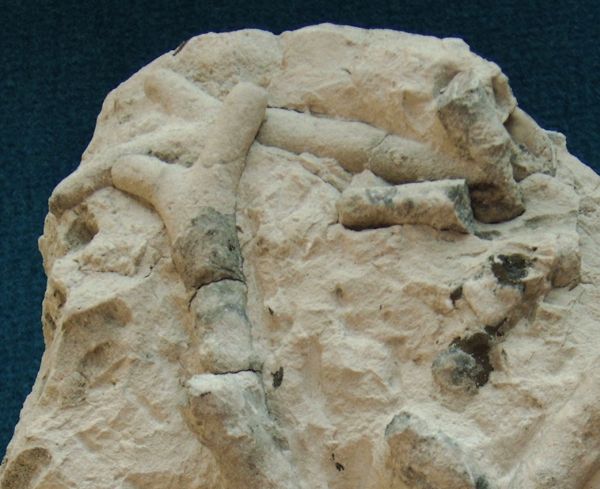
Astrocladia subramosa
Zittel 1878
Astrocladia subramosa is a branching sponge which may form large compound groups.
In the example shown to the left, most of the dense cortex has been lost, due to poor preservation.
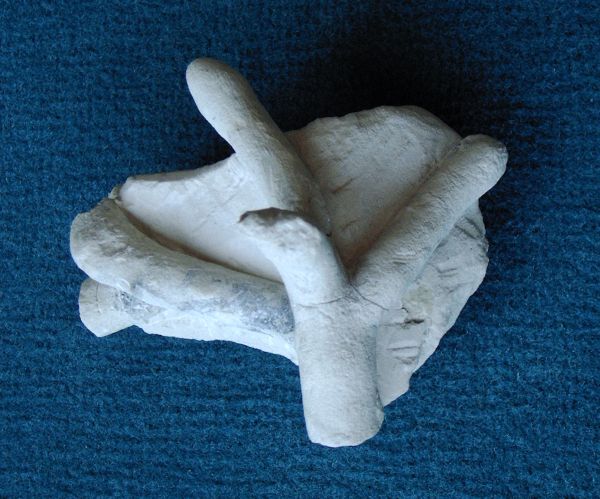
A multiply branched twig of Astrocladia subramosa.
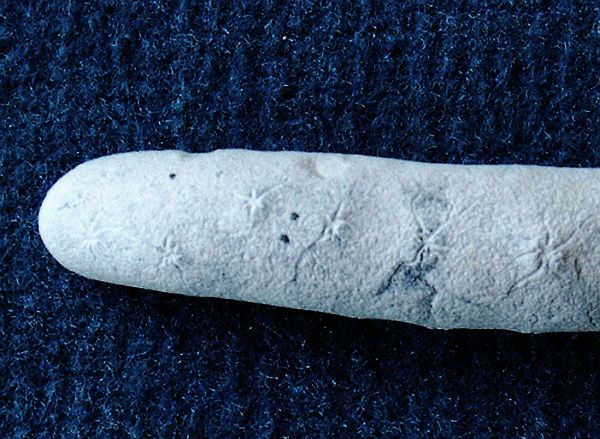
Various branched twigs of Astrocladia subramosa.
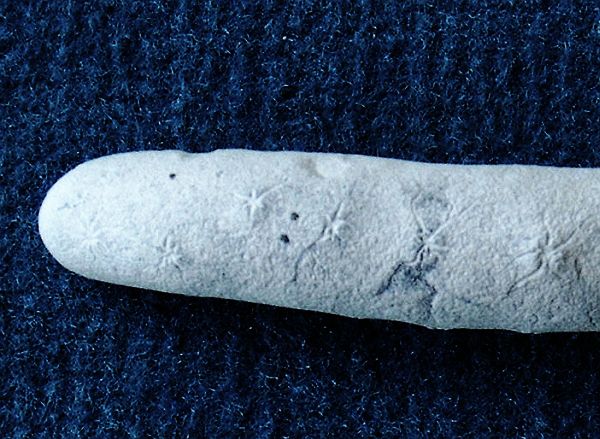
The fragment in the picture shows star-like grooves radiating from postica scattered along the twigs, which is typical for this species.
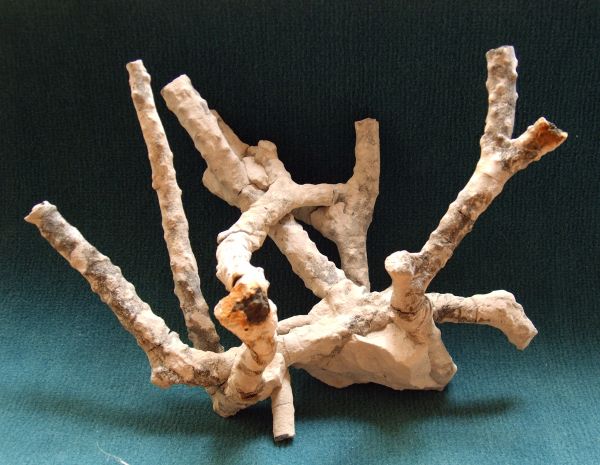
Astrocladia sp.
A large compound aggregate of Astrocladia sp. with rather long unbranched sections and many strongly protruding postica, showing star-shaped furrows with several exhalent pores (see photomicrograph further below).
Schrammen (1924) defined the new species Astrocladia nitida, which has a similar arrangement of the postica in longitudinal rows along the branches. However, Astrocladia nitida is distinguished by having only single exhalent pores on the wart-like protrusions. Thus the specimen shown in the image bears features typical of both Astrocladia species.
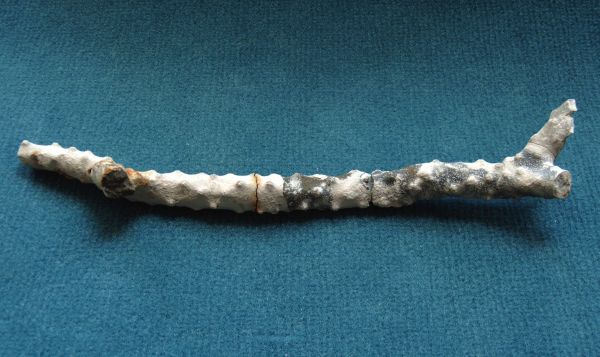
Branch of the same compound of Astrocladia sp. as above.
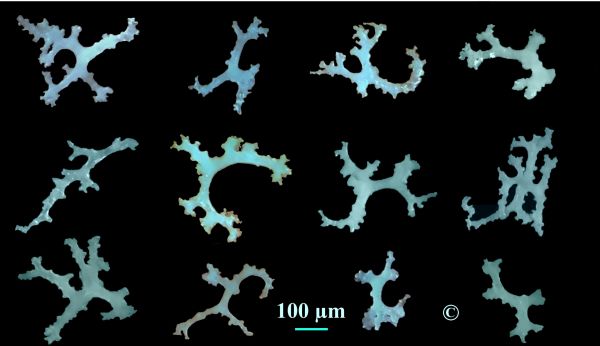
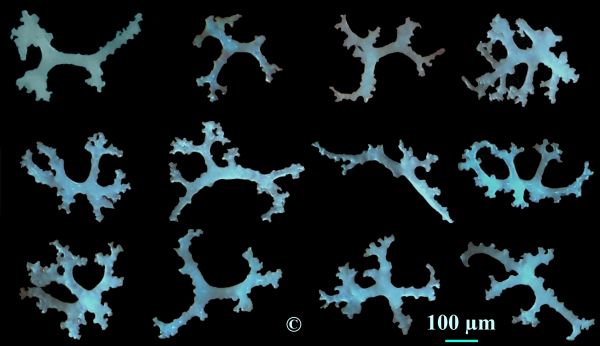
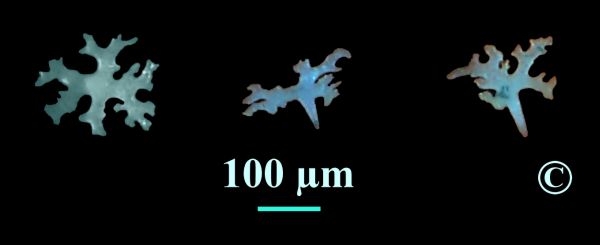
A selection of typical scleres of Astrocladia sp. is shown in the three plates (reflected light photomicrographs; samples from Teutonia).
The first and second plate comprise skeletal elements derived from the tetraclone. These scleres are very small by comparison to other tetracladine desmas, and the zygomes are strongly branched and spiny. Easily confused with rhizoclones.
The third plate shows several dermal phyllotriaenes of Astrocladia sp.. The phyllotriaenes are tiny (0.1 mm wide), with short (less than diameter) conical shafts.
Dermal scleres of Astrocladia subramosa could not be observed by earlier workers, but Schrammen (1910) predicted it would be phyllotriaenes. Schrammen (1924) reported scarce and tiny phyllotrianes for Astrocladia nitida.
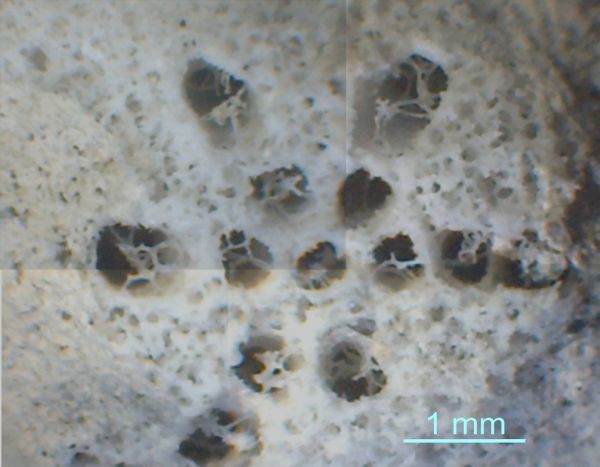
Photomicrograph of an etched specimen of Astrocladia sp., showing star-shaped group of exhalent pores.